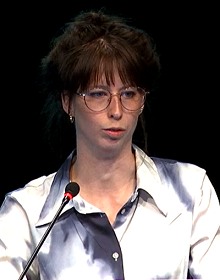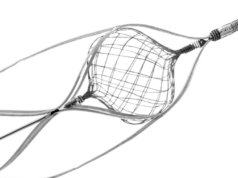
The risk of being diagnosed with a new cancer in the follow-up of patients with a first-ever stroke is particularly increased in patients younger than 50 years of age, while this risk is similar to that of the general population in older patients, according to a study presented at the European Stroke Organisation Conference (ESOC 2022; 4–6 May, Lyon, France).
Researchers from the Radboud University Medical Center (Nijmegen, The Netherlands) investigated the risk of receiving a cancer diagnosis in the years after a stroke compared to the general population. They analysed the risk of incident cancer in a group of 389,398 patients with a first-ever ischaemic stroke or intracerebral haemorrhage (ICH) included in the Dutch Population Registry, and national Hospital Discharge Registry, from 1998 to 2019.
The data were compared to matched peers from the general population. The main outcome measures were cumulative incidence of first-ever cancer after stroke, stratified by stroke subtype, age and sex, and standardised incidence rates (SIR). The study included 27,616 patients aged 15–49 years and 362,782 patients aged ≥50 years old.
The cumulative incidence of any cancer at 10 years was 3.7% (95% confidence interval [CI]: 3.4–4%) in the younger and 8.5% (95% CI: 8.4–8.6%) in the older age group. The risk of cancer was higher in the younger age group when compared to the matched general population. In this age group, the one-year risk of any new cancer was 2.6 times higher (SIR; 95% CI: 2.2–3.1) after ischaemic stroke and 5.4 times (SIR; 95% CI: 3.8–7.3) after ICH compared to matched peers from the general population.
In contrast, in patients older than 50 years of age, the one-year risk of any new cancer was 1.2 times higher (SIR; 95% CI: 1.2–1.2) after ischaemic stroke and 1.2 times (95% CI: 1.1–1.2) after ICH. The study highlights the increased risk of cancer after an ischaemic stroke or ICH in younger patients, which may indicate the possible relevance of stroke as the first manifestation of an already present but occult cancer, according to the researchers.
Jamie Verhoeven (Radboud University Medical Center, Nijmegen, The Netherlands), who presented these results at ESOC 2022, commented: “We have proven a temporal association between a first-ever stroke and a subsequent first-ever cancer diagnosis, which is most evident in younger patients. This can be explained in two ways. First, is that the cancer diagnoses made in the first year after stroke represented cancers that were already active (occult) at the time of stroke and may very well be causally related with the stroke.
“A second explanation is that cancer and stroke share risk factors. However, in my opinion, this does not fully explain the difference in increased risks between young and older patients. It does not fully explain why the risk of cancer is specifically higher in the first one-to-two years after the stroke diagnosis. I would think, if it was just shared risk factors, the risk-increase should remain relatively stable (or even increase due to the build-up of exposure to risk factors) over the years.
“For the diagnostic work-up in young stroke patients, it would be very interesting to see whether we can identify the patients who are most likely to have or develop a new cancer after stroke. We are currently working on this with a large clinical dataset of around 2,000 patients. If we can identify certain characteristics of young stroke patients, the next step would be to investigate whether there would be effective screening possibilities.”













